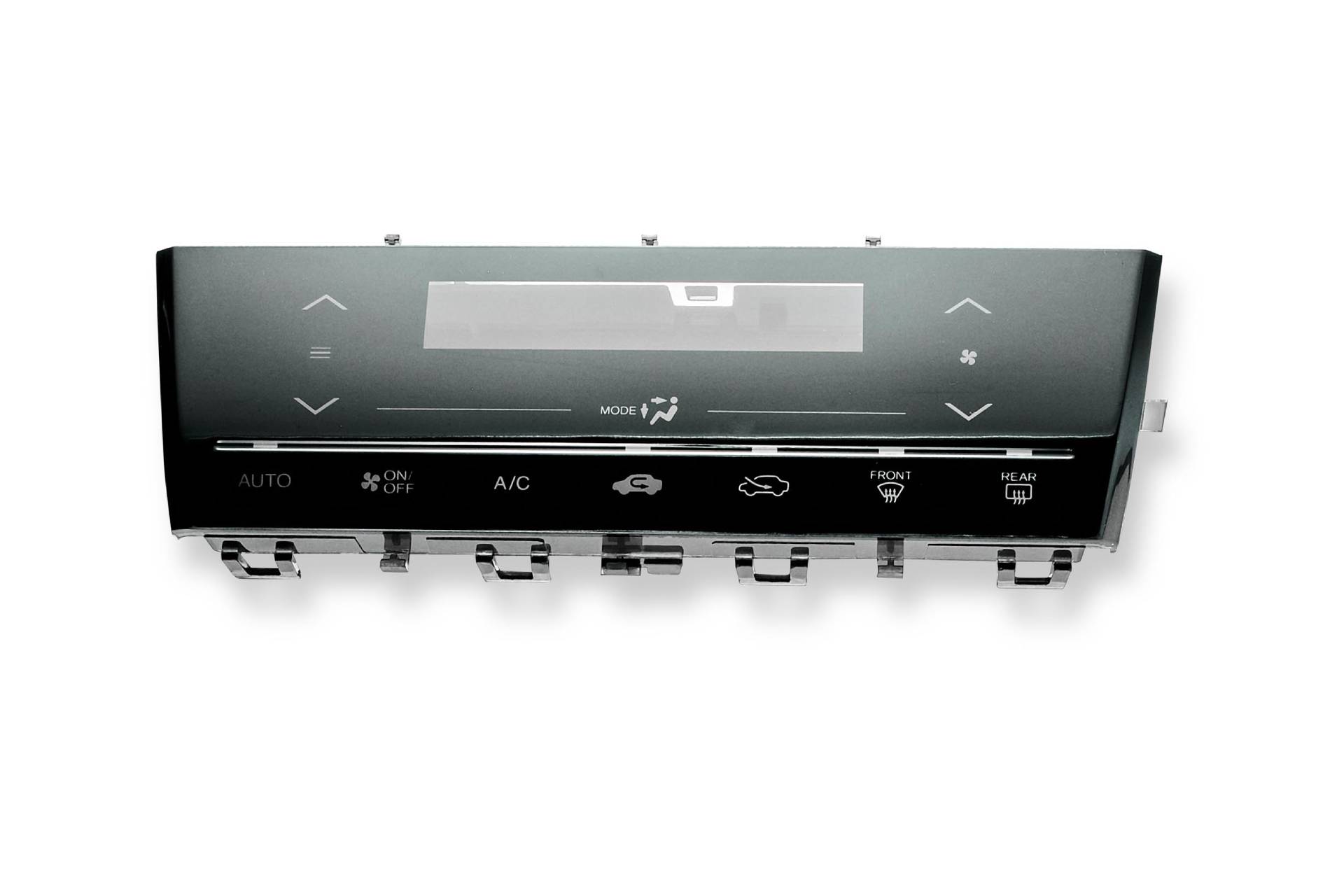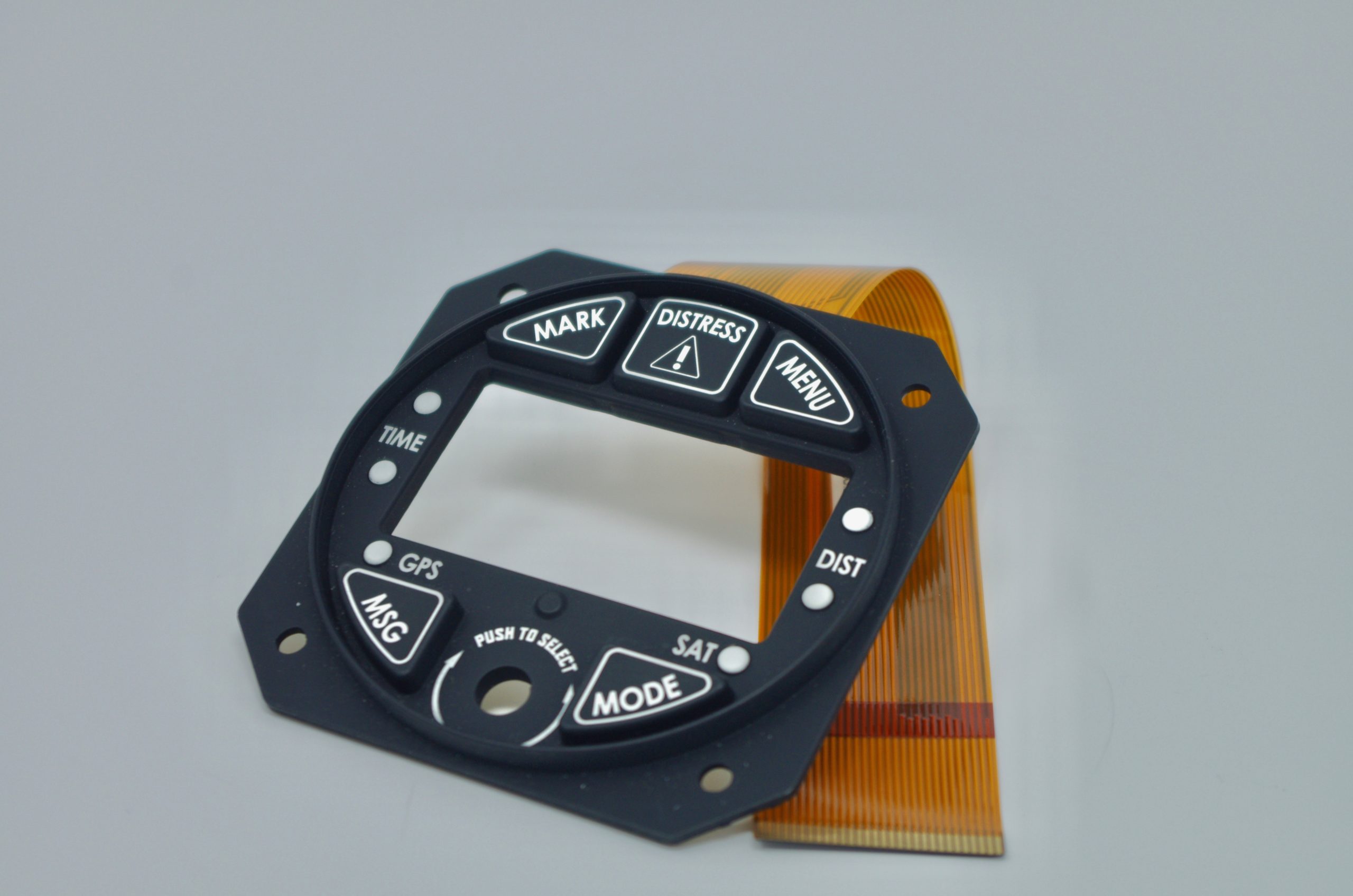Step-by-step guide to customizing Rubber Keypads for your devices
Discovering the Production Process Behind Rubber Keypads and Their Significance in Modern Instruments
Rubber keypads are critical in the capability of modern devices. Their production process includes mindful option of products and precise techniques. Keypads are developed to enhance individual communication while ensuring sturdiness and integrity. Understanding exactly how these parts are made reveals their importance throughout numerous applications. What aspects add to their performance, and exactly how do these elements affect user experience? The answers might reshape perceptions of this everyday technology.
Introduction of Rubber Keypads and Their Applications

Rubber keypads are versatile components widely made use of in numerous digital devices, ranging from consumer electronic devices to industrial tools. Their style enables for a tactile reaction, making them an optimal choice for applications needing individual interaction. Commonly located in items such as remotes, calculators, and medical gadgets, rubber keypads help with convenience of usage and ease of access.
In industrial setups, they offer vital features in equipment and control panels, where sturdiness and resistance to environmental aspects are necessary. The non-slip surface area boosts hold, advertising reliability sought after problems. Furthermore, their light-weight nature and customizable forms enable manufacturers to produce tailored remedies that fit particular needs. With innovations in technology, rubber keypads remain to evolve, integrating functions like backlighting and enhanced level of sensitivity. Overall, their adaptability and practical advantages add considerably to the performance of various devices across several markets.
Products Made Use Of in Rubber Keypad Production
Keypad producing depends on a choice of materials that boost both capability and durability. The key product made use of in the manufacturing of rubber keypads is silicone rubber, understood for its outstanding durability and flexibility. This product allows keypads to stand up to duplicated pushing without shedding form or efficiency. In addition, polycarbonate elastomers (TPE) are often used due to their convenience of molding and capacity to offer a soft-touch feeling.
Coloring agents, such as pigments, are incorporated to guarantee dynamic, resilient shades that boost visual appeal. Furthermore, additives like anti-UV agents and fire retardants may be mixed right into the rubber to enhance weather resistance and security compliance. The choice of products directly affects the keypad's tactile reaction, long life, and total performance in numerous gadgets. Eventually, the careful choice of these components is vital for the manufacturing of high-quality rubber keypads that fulfill customer and market demands.
The Design Process of Rubber Keypads
When creating rubber keypads, the layout procedure plays a vital role in identifying capability and individual experience. Designers start by specifying the keypad's meant use, taking into consideration variables such as the gadget it will accompany and the target customer group. This first phase consists of laying out designs that prioritize ergonomic aspects, guaranteeing the tricks are quickly accessible and properly spaced.
Next off, developers concentrate on the responsive comments wanted from the keypads, which influences the option of products and crucial forms. Prototyping is crucial in this phase, allowing designers to test numerous designs for convenience and responsiveness.
Manufacturing Techniques for Rubber Keypads
The manufacturing procedure for rubber keypads involves a series of exact techniques that ensure high quality and performance. Liquid silicone rubber (LSR) is often made use of due to its durability and versatility. The process starts with blending the raw materials, consisting of silicone, colorants, and curing representatives. This combination is then injected right into molds created to shape the keypads precisely.
Adhering to injection, the shaped keypads undergo healing, a heating procedure that solidifies the material (Rubber Keypads). This is commonly done in a press, making sure the keypads achieve the preferred hardness and resilience

Top Quality Control Actions in Production
To guarantee that rubber keypads fulfill high requirements of high quality and capability, extensive quality assurance procedures are applied throughout the manufacturing process. These steps start with resources assessment, making certain that only the highest-grade elastomers are utilized. During the production stage, drivers perform normal checks to keep track of specifications such as temperature, stress, and mixing times, crucial for attaining consistent item quality.
Post-production, each batch of keypads undergoes comprehensive screening, consisting of tactile action assessments and durability tests to assess performance under different conditions. Aesthetic inspections are additionally carried out to identify any kind of problems, such as bubbles or variances in appearance. Furthermore, conformity with market standards is validated, guaranteeing that the keypads satisfy safety and security and capability standards.
The Duty of Modern Technology in Keypad Development
Modern technology plays a necessary role in the advancement of rubber keypads by allowing sophisticated production techniques that boost precision and performance. In addition, ingenious material choice enables improved durability and responsiveness in keypad efficiency. These innovations not only improve manufacturing however additionally elevate the general high quality of the last product.
Advanced Manufacturing Techniques
Advancements in production techniques revolutionize the manufacturing of rubber keypads, boosting both effectiveness and accuracy. Technologies such as injection molding and 3D printing have actually changed typical processes, making it possible for producers to develop complicated designs with decreased waste and enhanced turnaround times. Automation plays an essential role in this advancement, simplifying production line and lessening human error. Additionally, computer-aided style (CAD) software program enables intricate customization, ensuring that keypads satisfy details user demands. Quality control actions have also advanced, including real-time tracking systems that identify flaws early in the manufacturing cycle. These developments not just improve the longevity and capability of rubber keypads yet also support the expanding demand for customized services in numerous sectors, from customer electronics to vehicle applications.
Innovative Product Selection
The advancement of making techniques has led the way for innovative material selection in rubber keypad development. Advancements in polymer science have actually presented products that improve toughness, versatility, and tactile responses. Producers currently make use of thermoplastic elastomers (TPE) and silicone compounds, which offer premium resistance to wear and recommended you read environmental factors. These materials permit the development of keypads that can endure prolonged use while maintaining aesthetic charm. In addition, the integration of ingredients and finishings boosts functionality, such as boosting grasp and lowering rubbing. The selection of products is necessary, as it straight affects the performance and durability of keypads in different devices, from consumer electronic devices to commercial tools. This innovative approach remains to shape the future of keypad style and usability.
The Effect of Rubber Keypads on User Experience
Rubber keypads significantly influence user experience with their boosted tactile response, which enables even more precise interaction. In addition, their toughness and long life add to regular efficiency over time, minimizing the need for regular replacements. This mix of attributes makes rubber keypads a recommended choice in numerous applications, ultimately impacting customer satisfaction.
Improved Tactile Action
Enhancing tactile action substantially affects user experience, specifically in devices that count on keypads for interaction. Rubber keypads offer a special mix of soft qualities and strength, permitting users to feel unique feedback with each press. This responses reinforces a feeling of control and accuracy, important in applications ranging from smartphones to commercial equipment. Individuals often report better complete satisfaction and efficiency when interacting with gadgets that include properly designed rubber keypads, as they help with quicker and a lot more accurate input. Furthermore, the ergonomic style of these keypads can minimize finger exhaustion, advertising longer use durations without pain. Overall, the boosted tactile reaction provided by rubber keypads significantly adds to an extra enjoyable and intuitive individual experience in modern-day innovation.
Durability and Long life
A vital aspect of individual experience with rubber keypads depends on their toughness and durability. These keypads are created to hold up against substantial usage, standing up to damage that usually impacts various other products. The robust nature of rubber warranties that keypads maintain their functionality and appearance with time, which is essential for gadgets regularly used in numerous settings. Customers gain from the reliability of rubber keypads, as they can sustain direct exposure to dirt, moisture, and temperature fluctuations without wearing away. This durability not just boosts user complete satisfaction but likewise minimizes the need for constant replacements, eventually adding to cost-effectiveness for makers. Basically, the resilience of rubber keypads substantially affects the overall performance and user experience in contemporary tools.
Frequently Asked Inquiries
How Lengthy Do Rubber Keypads Normally Last in Devices?
Rubber keypads generally last in between 5 to 10 years, relying on usage, environmental elements, and quality of products used (Rubber Keypads). Routine damage can shorten their life-span, impacting performance and user experience over time
Can Rubber Keypads Be Customized for Particular Applications?
Rubber keypads can indeed be tailored for specific applications, enabling modifications in dimension, shape, color, and structure. This versatility makes it possible for producers to produce tailored options that fulfill diverse user needs and improve performance in various gadgets.
Are Rubber Keypads Eco-friendly?
Rubber keypads are often not thought about ecologically pleasant because of their petroleum-based materials. Advancements in sustainable production practices and the advancement of bio-based choices are progressively boosting their eco-friendly effect in different applications.
What Prevail Issues Faced Throughout Rubber Keypad Production?
Common issues dealt with during rubber keypad manufacturing consist of irregular worldly top quality, mold flaws, improper curing times, adhesion failures, and challenges in achieving specific responsive comments. These problems can lead to decreased item efficiency and right here customer discontentment.
Exactly How Do Rubber Keypads Compare to Various Other Kinds of Secret Switches?
Rubber keypads supply a softer feeling and quieter operation compared to mechanical buttons, which supply tactile feedback. Rubber keypads may wear out faster and lack the precision that some individuals like in high-performance applications.
The primary product used in the production of rubber keypads is silicone rubber, recognized for its superb strength and adaptability. When creating rubber keypads, the style procedure plays an important function in identifying performance and customer experience. Rubber keypads greatly influence customer experience through their improved tactile feedback, which allows for more exact communication. Users usually report better complete satisfaction and effectiveness when connecting additional resources with tools that include well-designed rubber keypads, as they facilitate quicker and extra exact input. An essential facet of customer experience with rubber keypads lies in their toughness and durability.